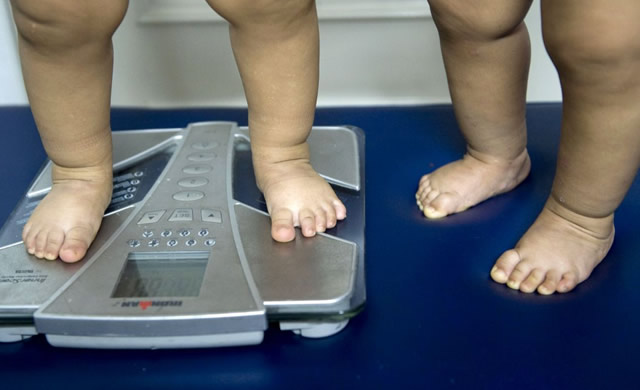
Is Childhood Obesity Still a Medical Problem?
10/04/2013 01:36AM | 9477 viewsIt’s the perennial conundrum of many personal weight-loss and diet goals writ large: Kids are eating better and engaging in more physical activity, but pound-for-pound, they aren’t quite achieving the desired results.
A new study published in Pediatrics shows that American children are exercising more, eating more fruits and vegetables, consuming less soda and candy, and watching fewer hours of television. But despite all of these positive developments, the study shows body mass index increased between 2001 and 2005. Researchers Ronald J. Iannotti and Jing Wang note that body mass index didn’t increase from 2005 to 2009, “suggesting that the increase in adolescent obesity observed over previous decades may be beginning to stabilize.” So at best we’re talking about a plateau.
Furthermore, buried at the end of the conclusions is a breakdown of the numbers by race that suggest there’s still plenty of work that needs to be done in regards to public health for minority youth communities. African-American kids ate more candy and drank more soft drinks; Hispanics engaged in less physical activity. The authors suggest that access to healthy foods, playgrounds and other recreation facilities, and school policies toward nutrition and physical activity, may be “potential socioenvironmental contributors to racial/ethnic differences.”
Dr. George Flores, the California Endowment’s program manager for prevention (and a trained physician with a focus on family practice), told TakePart that addressing just such socioenvironmental issues—which the Endowment has been doing across the state for years—is proving to be the most promising means of beating childhood obesity.
“The medical sector can’t cure it alone,” he says. “In fact it can’t cure it despite all of the money we’re pouring into the medical sector.”
It’s not that childhood obesity is undergoing a wholesale shift from the realm of medicine into urban planning, food access, etc., says Flores. He sees his work as, “helping people to recognize the importance of dealing with an issue that’s a health issue at its roots, but its not necessarily solely a medical treatment that will solve it.”
To illustrate how fundamental non-medical interventions are, Flores points to neighborhoods that struggle with supplying something so basic that most of us never think about it.
“We even have communities where getting plain drinking water is difficult. And getting soda for kids is cheaper than buying bottled water,” he says.
In minority communities—where liquor and soda are oftentimes more prevalent than fresh fruits and vegetables, and public access and crime keep kids inside instead of running around a park—taking the first steps toward making that change can be as simple as organizing walking groups.
“Instead of one person going out alone, a group of five people will go out and take back the streets together in places that are considered marginal if not dangerous,” says Flores.
On a far larger scale, the Endowment and simlar groups are working to rehab corner markets and liquor stores, bring farmers markets to underserved communities, and hope to build new public parks with money from Community Transformation grants that will soon become available through the Affordable Care Act.
Despite noting the ethnic disparities, the authors of the Pediatrics report still see childhood obesity as a problem for doctors to address. In their conclusion they write, “The potential role of pediatricians in improving these adolescent obesogenic behaviors needs further study.” No mention is given to the community-based interventions championed by Flores.
But studies geared specifically toward environmental influences on childhood obesity clearly indict access issues in minority neighborhoods. In a 2008 study, conducted at the University of Pennsylvania, researcher Shiriki K. Kumanyika writes:
Environments with lower than average neighborhood availability of healthful foods and higher than average availability of fast food restaurants, along with exposure to ethnically targeted food marketing may contribute to reliance on high calorie foods and beverages, and these foods may be socially and culturally valued. Attitudes about and environmental contexts for physical activity are also relevant.
Flores sees the doctor-centric approach advocated in the Pediatrics study as part of a larger problem.
“It’s an example of how our social investment in health and in medicine is skewed toward treatment at the high end. We’re spending more money than any other country does on drugs and highly paid physicians for problems that really have roots in social disparities and social programs,” he says.
See original article










Post your Comment
Please login or sign up to comment
Comments